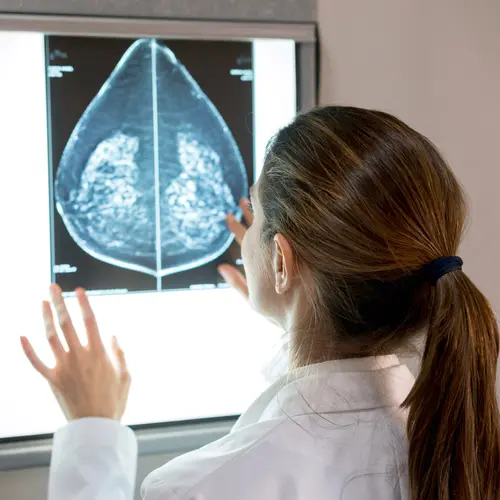If you're a woman, you probably have some association with the groundbreaking book Our Bodies, Ourselves -- whether you found it on your mother's bookshelf as a preteen and gleefully drank up the "dirty" information within its pages or whether, as a grown woman, you turned to it for the kind of honest advice you couldn't find anywhere else.
First published at the height of the women's movement in 1973 (think burning bras, Gloria Steinem, and the Roe v. Wade ruling), the book has since gone through many incarnations. With the newest edition just out, the time seems ripe for comparing the 21st century woman with her predecessors. How has women's health care changed in the past three decades -- and how do women view themselves -- their health, their bodies, and their sexuality -- now vs. then?
Just the fact that we take for granted the notion of "women's health" is a huge difference, says Judy Norsigian, one of the original authors of the book and executive director of the Boston Women's Health Book Collective. "There used to be this massive, gaping hole," she says. "There was nothing at all about women's health and sexuality that was in lay language, and even college-educated women were totally ignorant about their bodies."
These days, medical research is routinely done on women, whereas it wasn't three decades ago. And there are many more female physicians.
In the 1970s, your ob-gyn was almost certainly a man (98% were), and while male doctors can be wonderful, the whole attitude tended to be very paternal.
"Women simply did what their doctors told them to," says Nancy Church, MD, an ob-gyn in Chicago and a board member of the American Medical Women's Association. "These days, based on what I see in my practice, they feel much more empowered -- which is partly due to all the information available on the Internet and is also an aftereffect of the women's movement. Women think of their doctors as partners in their care, and they expect to have more control over what's done to their bodies."
Hysterectomies, for example, used to be done as a cure-all for all kinds of ailments, from bleeding to cancer, or even as a form of birth control. "All a surgeon needed to say in the old days was 'you need one' and that was it," Church tells WebMD. "Today, a woman is likely to challenge that recommendation and ask what the alternatives are."
The same is true of childbirth to some extent, though Norsigian says this natural process has become overmedicalized and that the midwifery model needs to be an option for more women, especially those outside of urban areas.
Unfortunately, not all women have reaped the benefits of the women's movement, like the undereducated and uninsured. "We have all this information to offer, but we're not getting it to everybody," says Valerie Weber, MD, director of internal medicine at Geisinger Health System in Danville, Pa. Lower-income women are not getting the care and screening that they need, she says. "I've had women come in who have never had a Pap smear."
2 Steps Forward, 1 Step Back
When it comes to accepting our own bodies, we seem to have regressed in some ways. Norsigian says the college women she speaks to feel enormous pressure to have cosmetic procedures or undergo extreme dieting -- the result, she says, of mass media with its barrage of makeover reality TV shows and ads for anticellulite creams. Church points out that "there are plastic surgeons out there basing entire practices on labia-reduction surgery. People wouldn't even have thought of worrying about such a thing until recently."
Church adds that women today want to hold on to youth in a way that their grandmothers' generation didn't. "In those days, women tended to wear their oldness with pride. Today there is a very different attitude toward aging. The dieting, the health clubs, the plastic surgery -- it's all because we're trying to prove that we're still young."
And while women of all ages are probably more sexually self-assured than ever, that confidence hasn't been accompanied by an appropriate amount of caution -- despite the persistence of AIDS and very real findings linking human papillomavirus (HPV) with cervical cancer.
Weber, herself a fan of the TV show Sex and the City, isn't a fan of the way the characters sleep around without, it seems, a worry about the potential threats to their health.
"I would like to think that this sort of behavior is limited to television, but unfortunately that is not the case," she says. "Like with so many diseases, most women probably feel that STDs will happen to someone else."
The facts show otherwise. According to the CDC, the U.S. has the highest rate of sexually transmitted diseases in the industrialized world. There are 15.3 million new cases per year of STDs, including chlamydia, herpes, and HPV, with two-thirds of these cases among women under the age of 25. And HIV cases are still increasing in women, too.
Less dire, but still significant to Norsigian, is the way that female "sexual dysfunction" has become "diseased," with the female equivalent of drugs like Viagra in the works.
"Although there is a tiny percent of women who might need a drug or device, the vast majority just need to learn about their bodies and communicate with their partners. That's all been out there in the literature for 30 years."
So, yes, there is a whole new crop of concerns facing American women today. But overall, despite some stops and starts, it's pretty clear that in the past 30-odd years, American women have, indeed, come a long way, baby.
